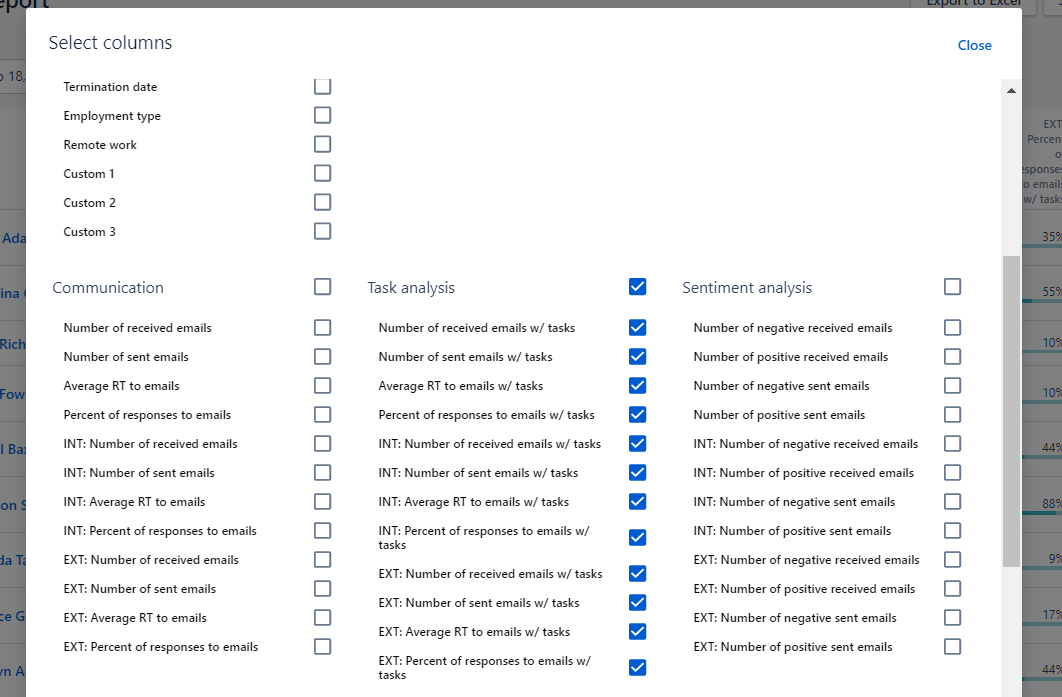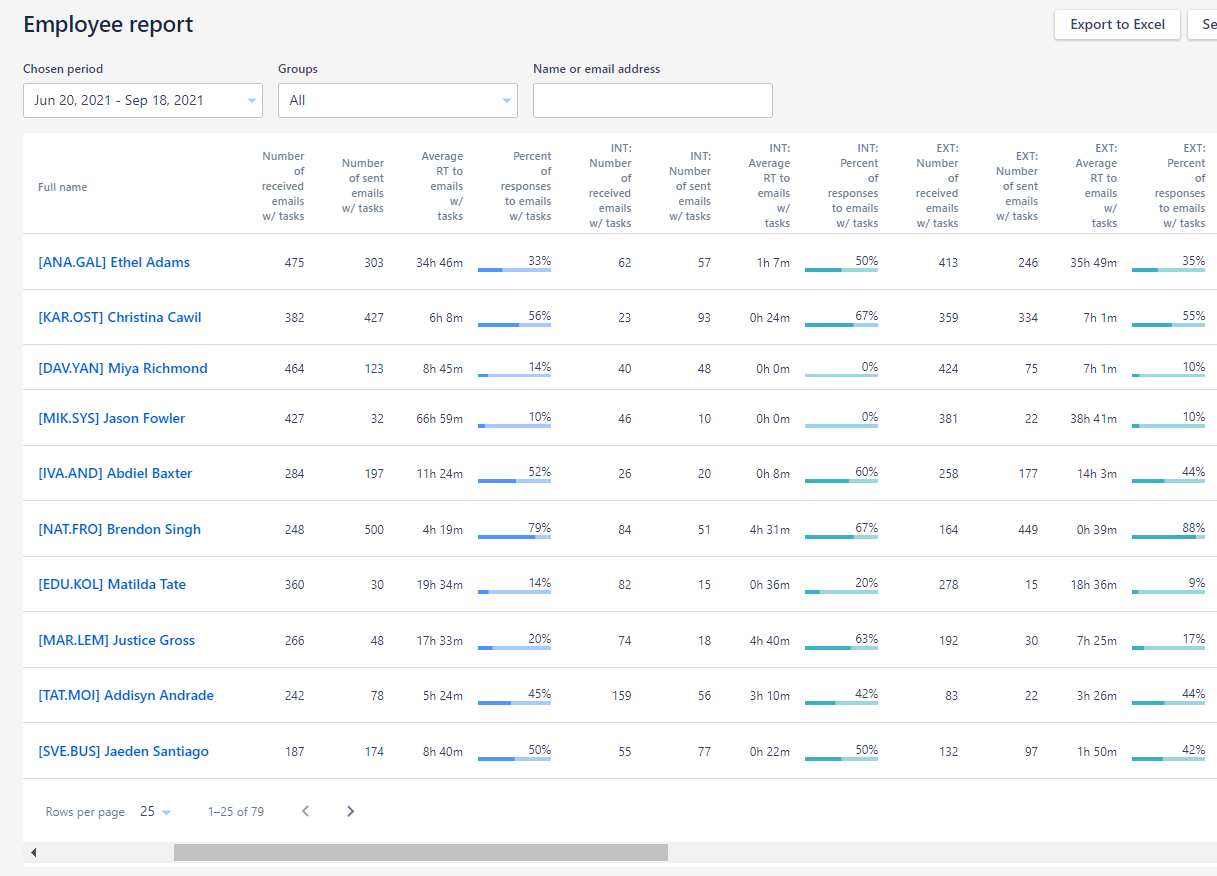Task analysis
The artificial intelligence of the platform uses NLP (Natural Language Processing) to recognize the presence of tasks, positive, negative or conflicts in communications between employees.
The information contained in text messages is extremely sensitive to the business of our customers. With this awareness, we deliberately designed the platform in such a way that all text analytics are implemented as a classification. The system has a task: to understand whether the text contains a set of high-level features that can give useful information about the performance of the individual employee of the company, about their contribution to a healthy atmosphere in the team, about the actual (not nominal) place of the employee in the business processes of the enterprise.
The platform is designed in such a way that text messages are not stored in the platform, so they cannot be read or stolen, they only exist in the information systems of the customer's company. It is absolutely safe to trust the platform to “read” the text.
We have developed and patented a two-step procedure for working with text. Thanks to it, we can use already trained classifiers or train new ones even without the text itself.
The platform understands a task as the presence of instructions for a specific person or group of employees in the message's informative part.
Examples of tasks:
Print out, sign and send the courier with the documents to the address below.
Schedule a meeting, discuss my proposal and inform me about the result.
John, choose an acceptable option and give appropriate instructions.
Metrics of an employee’s communication with tasks are divided into three blocks:
Metrics for all contacts, that is, any communication of an employee,
Metrics for internal contacts, that is, communication within the organization,
Metrics for external contacts, that is communication with people outside the organization.
For each block of metrics the platform calculates:
The Number of received emails with tasks
The number of incoming emails of an employee with tasks without taking into account mailings and automatic notifications.
The Share of received emails with tasks
The share of incoming emails with tasks, excluding mailings and automatic notifications.
The Number of sent emails with tasks
The number of outcoming emails of the employee with tasks, excluding emails that are marked as automatic.
The Share of sent emails with tasks
The share of outcoming emails with tasks, excluding mailings and automatic notifications.
The Average response time to emails with tasks
The average response time of an employee to incoming emails with tasks when taking into account only those emails that the employee responded to.
Weekly calculation: all outgoing emails of the user for the week are taken. For each of these emails, it is checked which of them were responses to the incoming previous email with the task. For each message that is a response, the difference in HH:MM:SS is taken between the moment of sending the response and the moment of receiving the message. For a week, the median of all the values obtained is taken. Emails that are marked as automatic are excluded from the calculation.
The calculation for more than a week: the median of weekly values.
The Percent of responses to emails with tasks
The percentage of incoming emails with tasks that the employee has responded to.
Weekly calculation: all incoming emails with tasks of the user are taken into account. For each of these emails, it is checked whether there was a response to this email. This gives a +1 response message.
Sent emails that are marked as automatic are excluded from the list of response emails.
The metric is considered as "the number of response emails" / "the total number of emails with tasks received".
The calculation for a period longer than a week: the median of weekly values.


In the Reports API, metrics can be returned: